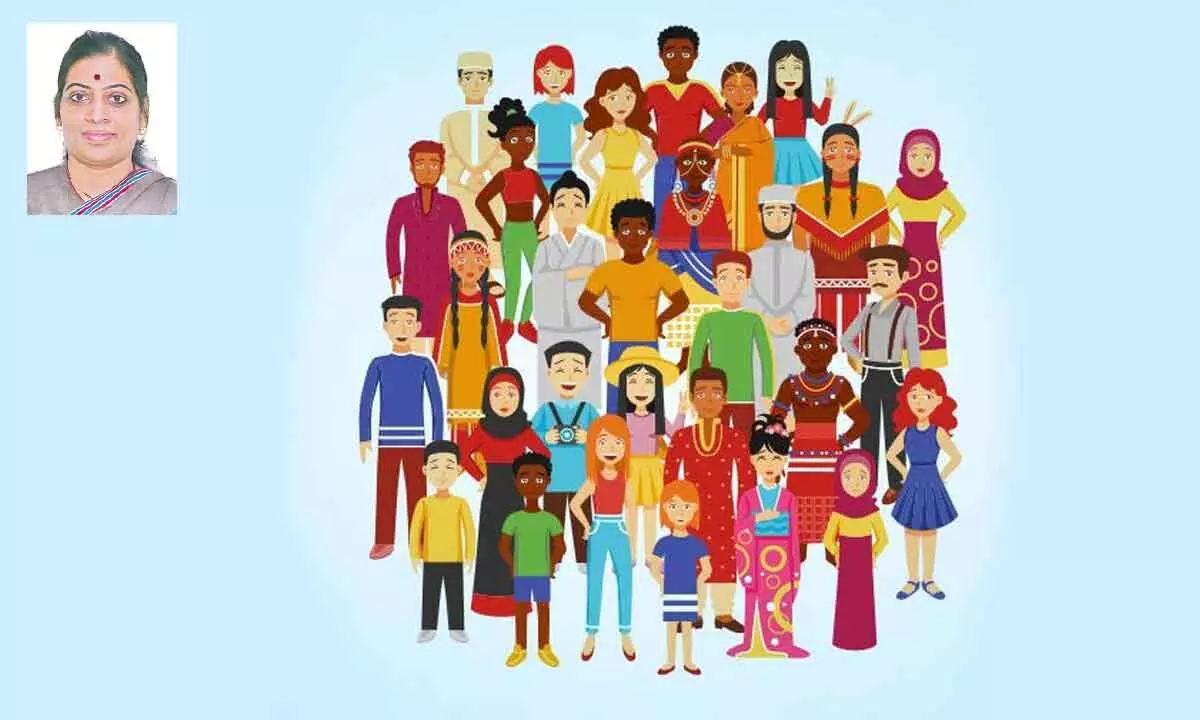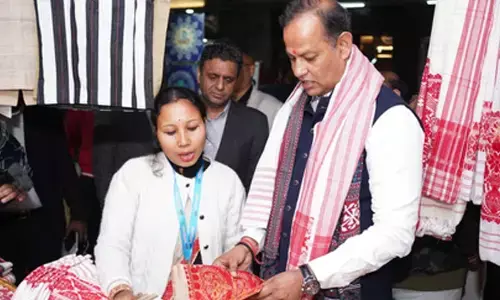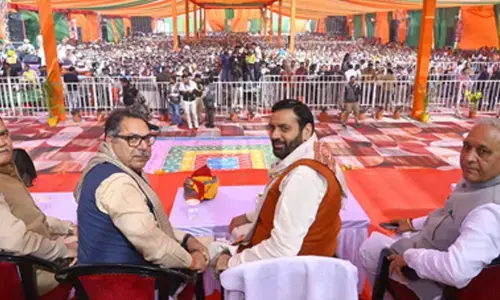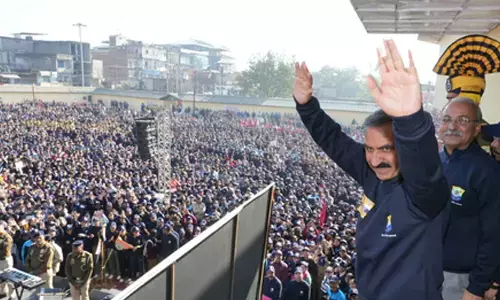Cultural Rights in India: Challenges and solutions in the age of migration

Cultural rights are crucial for preserving diversity and promoting growth. India, a culturally rich nation, has adopted universal cultural rights mandates. However, assimilation and globalization pose challenges to India’s culture preservation. The article explores the specific challenges and potential solutions faced by India in preserving its culture amidst migration.
Importance of preserving cultural rights
Preserving cultural rights is crucial for maintaining the continuity and diversity of cultures, contributing to a harmonious and inclusive society. India has successfully preserved its culture through initiatives such as promoting traditional art forms, preserving historical monuments, and implementing policies that safeguard cultural diversity. This ensures that India’s rich cultural heritage continues to thrive and be passed down to future generations. However, as migration continues, India faces challenges such as potential dilution of cultural practices, values, and beliefs, as well as erosion of linguistic diversity. To address these challenges, India has established institutions that promote cultural awareness and support traditional art forms. Additionally, initiatives are being taken to ensure the representation and protection of indigenous cultures and languages. These efforts contribute to the universality of adopting the cultural rights mandate and serve as solutions for preserving India’s diverse cultural identity amidst migration.
India’s contribution to the universality of adopting the mandate
India’s cultural diversity is significant in shaping its identity and promoting cultural rights. With over 1,600 languages spoken, India is a linguistic treasure trove and home to various religions, languages, and traditions. This diversity contributes to the country’s rich history and multiculturalism. India’s rich heritage and historical sites, such as ancient temples and Mughal forts, attract tourists from around the world. These sites showcase India’s architectural brilliance and cultural significance, contributing to the country’s cultural identity and heritage. India has played a significant role in advocating for cultural rights at international platforms, such as through its participation in UNESCO conventions. Despite migration and globalization, India has successfully navigated the challenges of preserving its culture amidst migration, implementing measures like cultural integration programs to ensure migrants can embrace their cultural roots while assimilating into the host society.
India’s role in promoting cultural rights internationally
India has played a significant role in promoting cultural rights internationally, showcasing and preserving its diverse cultural heritage through various platforms. The country has been a strong advocate for recognizing cultural rights as fundamental human rights and has actively participated in UNESCO’s programs and initiatives to safeguard cultural expressions and heritage sites. India’s vibrant traditions, such as music, dance, and art, have facilitated cultural exchange and understanding among nations.
India’s involvement in UNESCO has contributed to the universality of adopting UNESCO’s mandate by promoting and protecting cultural diversity and recognizing intangible cultural practices. However, the process of migration poses challenges to the preservation of Indian culture, as individuals may face the dilemma of assimilating into the host culture while maintaining their own cultural identity. To address this issue, India has implemented solutions such as cultural exchange programs and community centers to foster cultural awareness and identity among migrant populations.
Indian National Trust for Art and Cultural Heritage (INTACH) is a crucial organization in supporting the preservation of India’s vast and diverse cultural heritage. Established in 1984, INTACH has undertaken numerous initiatives to promote awareness, conservation, and protection of cultural assets, working closely with government agencies, local communities, and other stakeholders.
Preserving culture during migration is crucial for India’s national development and global solidarity. India has implemented various solutions to preserve its rich and diverse culture, such as promoting cultural exchange programs, education on heritage and traditions, and establishing cultural centers abroad.
Challenges faced by India with increasing migration
India faces challenges in preserving its cultural heritage due to increasing migration, which can lead to the dilution or loss of traditional values, customs, and languages. This can negatively impact India’s rich cultural diversity and unique identity. To mitigate this challenge, India can adopt measures such as promoting cultural education, preserving historical sites and artifacts, and implementing policies that support cultural preservation. The Indian government has undertaken initiatives like promoting Indian classical music and dance forms, organizing cultural festivals, and establishing cultural institutions to ensure the preservation of India’s cultural heritage in the face of increasing migration.
Assimilation and dilution of cultural practices are significant issues in today’s globalized world, as migration has led to the assimilation and dilution of traditional cultural practices. India has made significant efforts to contribute to the universality of cultural rights by adopting mandates that aim to safeguard cultural practices and ensure their preservation in the face of migration. These efforts include the establishment of cultural centers, promotion of cultural exchange programs, and the recognition and protection of indigenous cultural practices.
Language loss and its impact on cultural identity are also significant challenges. When a language disappears, important aspects of a culture are lost, leading to a sense of disconnection from one’s cultural heritage and erosion of cultural diversity. India is taking steps to preserve its cultural identity amidst migration by establishing cultural centers and museums, promoting cultural festivals and events, and implementing cultural integration programs.
Documenting and archiving cultural practices is crucial for preserving the rich diversity of human cultures. India has undertaken initiatives to document and archive traditional music, dance, and theatre forms, the Indira Gandhi National Centre for the Arts, and the National Mission for Manuscripts. The Digital Library of India project has made thousands of books available online, facilitating global access to Indian cultural heritage.
India has successfully adapted to the challenges of migration by promoting cultural education, preserving historical sites and artifacts, and promoting mother tongues and indigenous languages. By embracing the benefits of migration and preserving its unique cultural identity, India can continue to thrive in the face of globalization.
India’s rich cultural heritage offers a case study for preserving culture amidst migration. With a long history of migration and diverse cultures, challenges arise in preserving cultural rights. The Banjara community in Rajasthan, known for their nomadic lifestyle and folk arts, faces dilution and extinction as they settle into urban areas. Initiatives like local organizations and dedicated cultural spaces in cities like Jaipur help preserve these traditions.
Globalization on Indian cinema
Globalization has significantly impacted Indian cinema, both positively and negatively. The spread of technology and global access to films has allowed Indian cinema to reach a global audience, allowing filmmakers to showcase their talent and grow the industry. However, globalization has also led to the saturation of foreign influences, sometimes dilution of indigenous culture. Indian cinema is not just a victim of globalization but also a powerful tool for cultural preservation and exchange. Filmmakers use their movies to promote and preserve Indian culture, showcasing traditions, customs, and values unique to India. The rise of regional cinema has also played a crucial role in the preservation of local cultures. Regional films showcase local customs, dialects, and rituals, addressing issues specific to each region. The success of regional films has led to the establishment of regional film festivals and platforms, further contributing to the preservation of local cultures.
Impact of urbanization on traditional arts and crafts
Urbanization has significantly impacted traditional arts and crafts in India, leading to marginalization and overlooking of traditional practices. As cities grow, artisans are often forced to abandon their crafts for more sustainable livelihoods, resulting in a decline in production and cultural heritage loss. However, efforts to preserve and promote traditional arts and crafts in urban areas have been made by non-profit organizations and government initiatives.
One challenge India faces in preserving its cultural heritage is the decline in demand for traditional crafts. With modernization and urbanization, people’s preferences towards mass-produced products have relegated traditional crafts to nostalgia, jeopardizing their livelihoods and eroding the cultural fabric of the country. Organizations like the Craft Council of India and the Ministry of Textiles are working to revive and promote traditional crafts through awareness, training, and market linkages.
Initiatives to revive and promote traditional craftsmanship include the establishment of craft clusters and villages, which provide a platform for artisans to come together, share skills, and collaborate on revitalizing traditional forms of craftsmanship. Examples include the Shantiniketan Leather Craft Village in West Bengal, which brings together leather artisans and provides training and infrastructure support.
India’s vast and diverse cultural heritage is crucial in preserving its culture during migration. While India has made significant contributions to universal cultural rights, challenges such as the dilution of regional cultures due to urbanization and the homogenization of popular culture persist. To address these challenges, India has implemented measures such as cultural centers and the promotion of traditional art forms. Preserving cultural rights is crucial for maintaining the continuity and diversity of cultures, contributing to a harmonious and inclusive society. India has successfully preserved its cultural heritage through initiatives like promoting traditional art forms, preserving historical monuments, and implementing policies that safeguard cultural diversity. Despite the challenges posed by migration, India has successfully preserved its rich cultural heritage through initiatives like promoting cultural awareness, supporting traditional art forms, and ensuring the representation and protection of indigenous cultures and languages. These efforts contribute to the universality of adopting the cultural rights mandate and serve as solutions for preserving India’s diverse cultural identity amidst migration.
(The author is an Assistant Director on deputation with National Gallery of Modern Art, Ministry of Culture, New Delhi)
















